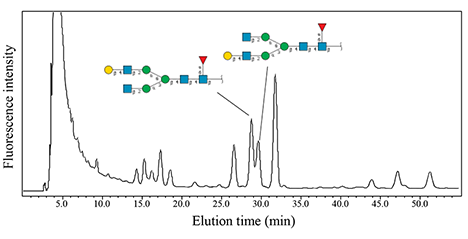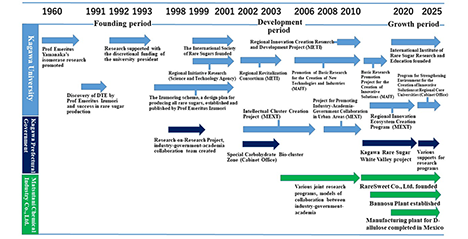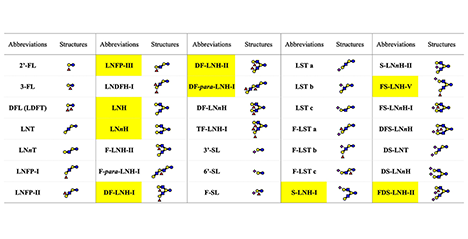SGlycan structural analysis using HPLC mapping enables the quantitative analysis of complex glycan structures while distinguishing isomers, playing an essential role in the Human Glycome Atlas Project. This article introduces the fundamental principles and applications of HPLC mapping, with a focus on its integration with mass spectrometry and the utilization of the "GALAXY" database for methods of identifying glycan structures. This technique significantly contributes to the acceleration of glycan research and the refinement of the human glycan map. ...and more

In the Rare Sugars Series, we began with the first installment, “What Are Rare Sugars?”, which covered the history of rare sugars and their position in nature. This was followed by a description of the fundamental concept of the “Izumoring” in the systematized production of all rare sugars using enzymatic methods and of its evolution. In subsequent installments, we outlined an overview of the physicochemical characteristics of rare sugar crystalline structures; an overview of rare sugar production methods based on the Izumoring strategy, and the respective enzymes involved. We also covered the development of applications for various rare sugars. In terms of developing rare sugar applications, we introduced the discovery and development of rare sugar drug candidates for medical fields, including those with anticancer, anti-diabetes, and anti-obesity effects, and also those with anti-aging effects for cosmetics. We introduced the functional development of rare sugars for use in food and agriculture as well. This paper summarizes how industry, government, and academia have collaborated to advance the practical application of research outcomes derived from these developments. Our intent was to assess the impact of industry-government-academia collaboration on the commercialization of rare sugars. To accomplish this, we examined the history of the regional collaborative translation of rare sugar research into practical applications and traced the course of the social implementation of local innovations. ...and more

Human mature milk contains around 11.3 g/L of human milk oligosaccharides (HMOs) as an average concentration, which is the third largest solid component after lactose and lipid. Around 200 HMO structures have been characterized to date, and they are classified into 21 series based on core structures, none of which contain fucose (Fuc) and N-acetylneuraminic acid (Neu5Ac) (Fig 1). Representative HMO structures are shown in Fig 2. Other HMOs exist only in trace amounts in human milk. When breastfed infants drink their mothers’ milk, a major part of the HMOs is not absorbed in the small intestine to reach the colon. HMOs perform the following biological functions: (1) they stimulate the growth of the beneficial colonic bacteria including bifidobacteria, (2) they inhibit infection by pathogenic microorganisms, (3) they affect immune modulation, (4) they inhibit the development of necrotizing enterocolitis (NEC) by strengthening colonic barrier function, and (5) they stimulate nerve and brain function, etc. At present, only a few HMOs have been manufactured on an industrial scale and used as additives to infant formula in several overseas countries, and the number of cohort studies showing correlation between the health status of breastfed infants and the profile of HMOs in their mothers’ milk, as well as in vivo or in vitro studies, demonstrating biological functions is rapidly increasing. We summarize the history of HMOs studies in Japan in this mini review, and address what the future may hold for HMOs studies as well as steps toward commercializing HMOs in Japan. ...and more

GGlycans related to β-1,2-glucans, acting as a host immune evasion factor, are synthesized by various bacteria. In particular, osmoregulated periplasmic glucans synthesized by root nodule bacteria and plant pathogenic bacteria are essential for their symbiosis and pathogenicity, and it is expected that new agrochemicals and pharmaceuticals will be developed as a result of the synthesis and acceptance of these glycans as control targets. However, many of the synthases and receptors that can serve as targets have not been identified. A novel family of OPG synthases (GH186), which has been discovered by functional and structural analyses by the authors, was identified as being key to the synthesis of two of the three major natural OPG. This paper reports a unique substrate recognition mechanism suggested by these analyses and the existence of new molecular mechanisms for glycan synthesis and degradation reactions. ...and more
